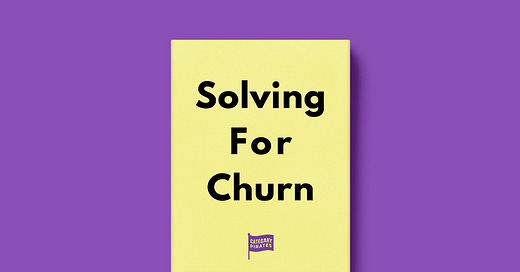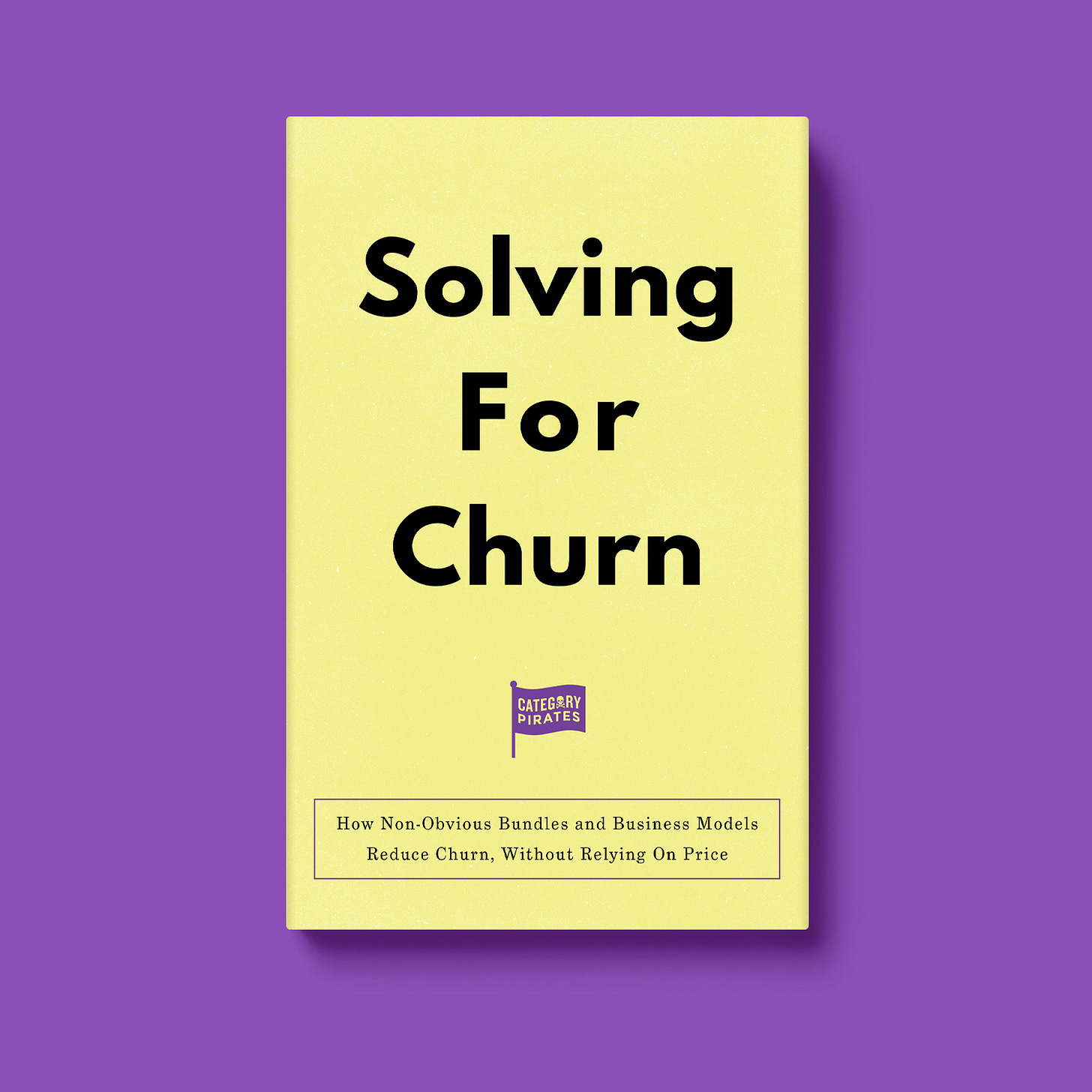Solving for Churn: How Non-Obvious Bundles and Business Models Reduce Churn, Without Relying On Price
Tackling churn in a Native Digital world requires new and different thinking, strategy, and tools.
Arrrrr! 🏴☠️ Welcome to a 🔒 subscriber-only edition 🔒 of Category Pirates. Each week, we share radically different ideas to help you design new and different categories. For more: Dive into an audiobook | Listen to a category design jam session | Enroll in the free Strategy Sprint email course
Dear Friend, Subscriber, and Category Pirate,
Netflix’s Stranger Things was the top-streamed show in 2022, with 1.35 billion hours viewed in the first 28 days after launch.
By the end of the year, viewers had streamed 52 billion minutes of the series.
Said differently: People spent the equivalent of 36,111,111 days (or 98,935 years) watching the show.
Stranger Things was an outlier for Netflix. It attracted millions of viewers, and that gigantic viewing number was good news for the streaming platform. Since the launch of Stranger Things in 2016, Netflix has acquired a ton of customers—and not just because of this one show. Its original programming has captivated viewers, won awards, and cemented its place as Category King.
From 2016 to 2022, Netflix’s paid subscribers jumped from 89 million to 231 million.
But this success is counterbalanced by less rosy news.
According to Antenna, a measurement company for the subscription economy, Netflix’s net additions (gross subscriptions minus cancellations) went from +750,000 in 2019 to -688,000 in 2022. In other words, Netflix lost subscribers. And there’s a specific reason why.
Subscription services, especially those with binge-able content like Stranger Things, are popular among “Serial Churners”—a category of consumers who destroy customer lifetime value for subscription-based categories by binging and bailing.
Serial Churners are the antithesis of Superconsumers.
A Serial Churner, languaged by Antenna, is a consumer who quits three or more services in a two-year span.
Now, you know Superconsumers represent 10% of a category’s highest-volume customers but account for 30% to 70% of category sales—and an even higher share of profits and market cap. You can find Superconsumers in most categories of products or services. But as more companies shift to a subscription business model, new data revealed you can also find Serial Churners.
We’ve come to think of this group as the anti-Superconsumer.
If not properly managed, Serial Churners can destroy profits and market capitalization.
Serial Churners are like the coupon chasers that destroyed Groupon. They are transactional, fickle, and very price sensitive. Which makes them the worst kind of customers.
How’s this for havoc…





